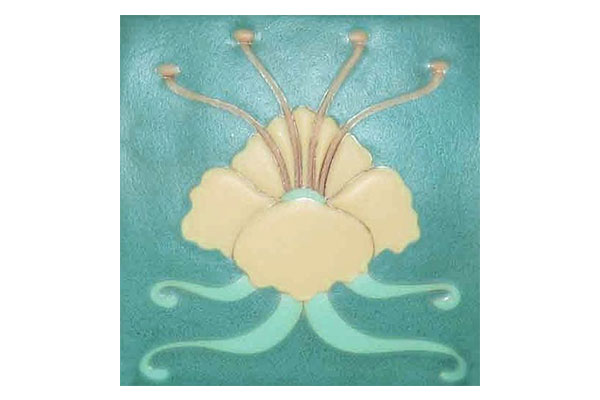 It’s long since been established Artus Van Briggle was a big contributing factor in what’s known as the Art Nouvea movement. Those who appreciate the Van Briggle Pottery style can easily see it replicated in contemporary pottery efforts. It’s what happened following his death that some may not be aware of, however.
It’s long since been established Artus Van Briggle was a big contributing factor in what’s known as the Art Nouvea movement. Those who appreciate the Van Briggle Pottery style can easily see it replicated in contemporary pottery efforts. It’s what happened following his death that some may not be aware of, however.
The production of the Van Briggle tiles did not even begin until after Artus Van Briggle’s death in 1904. Of course, the tiles used during the construction of the Memorial Pottery Plant were made by Van Briggle pottery; that said, this information was not made public until after the Memorial pottery opened.

Artus Van Briggle
These titles were created using dry-press tile machines along with leftover glaze that had first been used to glaze other pottery pieces. Interestingly, the pottery company advertised how the various tiles were created: either as hand-pressed or machine-pressed. That kind of disclosure simply isn’t found in today’s marketing and advertising efforts. Another way of distinguishing the machine from hand pressed pieces is by looking at the colors and finishes. Machine pressed tiles have a single color with a matte finish. Those that are hand pressed will be decorated with several colors and sometimes with incised designs. Speaking of marketing efforts, the company made suggestions in its advertising that the tiles would be ideal for use on one’s porch, laundry rooms, kitchens, fireplace mantles and even as wall coverings. To help further their efforts, many public buildings had (and many still do have) Van Briggle tiles installed.
These tiles were offered at the Memorial plant, which was designed by the famous architect Nicholas Van den Arend, on Uintah Street in Colorado Springs. It should be noted, too, that few of these tiles were ever marked, so discerning tile numbers can be a bit tricky, unless, of course, you stumble across one of the rare ones with incised letters and numbers.


